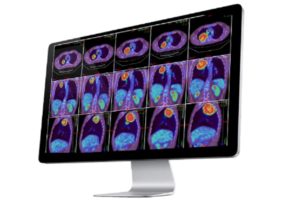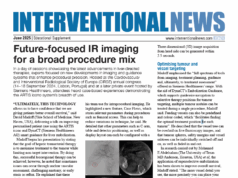 The US Food and Drug Administration (FDA) has granted 510(k) clearance to the company DOSIsoft to market its Planet Onco Dose software, for its oncology and Yttrium-90 (Y90) microsphere selective internal radiation therapy (SIRT) 3D dosimetry components.
The US Food and Drug Administration (FDA) has granted 510(k) clearance to the company DOSIsoft to market its Planet Onco Dose software, for its oncology and Yttrium-90 (Y90) microsphere selective internal radiation therapy (SIRT) 3D dosimetry components.
According to a company press release, Planet Onco Dose is a comprehensive software platform dedicated to medical diagnosis aid, therapy response assessment aid, contouring for radiotherapy, and internal dosimetry computation, using molecular imaging modalities.
It is a modular software suite comprised of two main elements: an oncology module (Planet Onco) and a dosimetry module (Planet Dose). The former, the oncology module, has the core system features: comprehensive reviewing of multimodal molecular image series (CT, MRI, PET, SPECT), fusion and registration, automatic and semi-automatic contouring of regions of interest, tumour segmentation, quantification, tumoural activity monitoring, and therapy response assessment. The dosimetry module includes 3D personalised voxel-based internal dosimetry computation dedicated to molecular radiotherapy (MRT).
CE marked since March 2016, Planet Onco Dose is the first fully integrated imaging and personalised 3D dosimetry platform for radionuclide-based therapies, the company states.
Planet Onco Dose is intended to assist the user in the diagnosis, quantification and verification of radiation doses received by tissues as a result of administering permanent Y90 microsphere implants, as well as in therapy response follow-up.
Planet Onco Dose provides tools for post-treatment absorbed dose calculation and evaluation on PET and SPECT images. The following functions are available to allow dose calculations for patients after they have received a treatment using permanent Y90 microspheres:
- 3D liver-lung shunt assessment
- Voxel-based dosimetry based on Y90-microspheres-PET (or SPECT Bremsstrahlung) series
- Dose computation models: local deposition method and voxel S value dose kernel convolution approach
- Analysis down to any liver sub region: healthy liver, lobes, tumors, toxicity regions
- Advanced and interactive dosimetry quantification (profile, dose-volume histograms, statistics)
- Ability to scale to known activity
- Compatible with PET images acquired with another radioisotope (correction of branching ratio and decay parameters)










